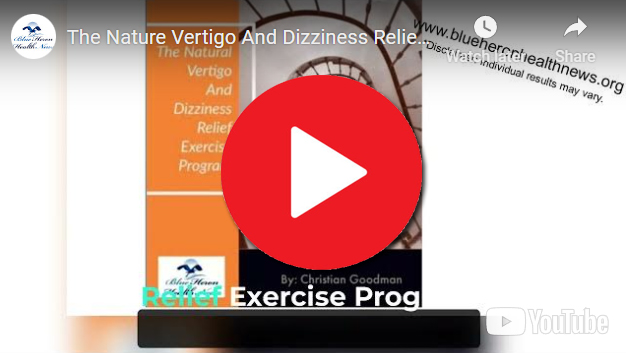The Nature Vertigo And Dizziness Relief Exercise Program™ Created by Christian Goodman, Vertigo and Dizziness Program is a designed to help stop vertigo and dizziness once and for all. Medical practitioner don’t know the exact cure for this condition but this program will show you exactly what you need to make this painful condition a thing of the past. This program has recommended a set of simple head exercises that help cure this condition. The remedy that the author has recommended are completely natural meaning that you won’t use medication or undergo through life-threatening surgical procedure. The set of exercises that he has recommended are easy and can be performed by anyone regardless of where they are or their current physical shape.
How does labyrinthitis differ from vestibular neuritis?
Labyrinthitis and vestibular neuritis are both conditions that affect the inner ear and can cause similar symptoms, such as vertigo and balance issues. However, they have distinct differences in terms of the specific structures they affect, their causes, and their associated symptoms. Here’s a detailed comparison of labyrinthitis and vestibular neuritis:
Labyrinthitis
– Definition:
- Labyrinthitis is an inflammation of the labyrinth, a complex system of fluid-filled channels and cavities in the inner ear. The labyrinth includes both the cochlea, which is responsible for hearing, and the vestibular system, which is responsible for balance.
– Causes:
- Infections: Viral or bacterial infections are the most common causes. Viral infections, such as those caused by the common cold or influenza, are more frequent. Bacterial labyrinthitis can occur as a complication of otitis media (middle ear infection) or meningitis.
- Autoimmune Conditions: Rarely, autoimmune diseases can cause labyrinthitis.
- Trauma: Head injuries or surgery involving the inner ear.
– Symptoms:
- Vertigo: A spinning sensation that can be severe and may last for days.
- Hearing Loss: Sensorineural hearing loss in the affected ear, which can be partial or complete.
- Tinnitus: Ringing or buzzing noise in the affected ear.
- Balance Issues: Difficulty with balance and coordination.
- Nausea and Vomiting: Often associated with severe vertigo.
– Diagnosis:
- Clinical Examination: Assessment of symptoms and medical history.
- Hearing Tests: Audiometry to evaluate hearing loss.
- Imaging: MRI or CT scans may be used to rule out other conditions.
- Lab Tests: Blood tests to check for infections or autoimmune markers.
– Treatment:
- Medications: Antiviral or antibiotic medications if an infection is present. Corticosteroids may be used to reduce inflammation.
- Symptom Relief: Antihistamines, antiemetics, and vestibular suppressants to manage vertigo and nausea.
- Vestibular Rehabilitation: Physical therapy to improve balance and reduce dizziness.
Vestibular Neuritis
– Definition:
- Vestibular neuritis is an inflammation of the vestibular nerve, which carries signals from the inner ear to the brain about balance and spatial orientation. Unlike labyrinthitis, vestibular neuritis does not typically affect hearing.
– Causes:
- Viral Infections: The most common cause is a viral infection, often linked to the herpes simplex virus. It can also follow an upper respiratory infection.
- Autoimmune Conditions: Rarely, vestibular neuritis may be associated with autoimmune disorders.
– Symptoms:
- Vertigo: Severe and sudden onset of vertigo that can last for several days.
- Balance Issues: Difficulty with balance and a sense of disequilibrium.
- Nausea and Vomiting: Common due to the intensity of vertigo.
- Absence of Hearing Loss: Hearing is typically not affected, distinguishing it from labyrinthitis.
– Diagnosis:
- Clinical Examination: Focus on vertigo and balance issues without hearing loss.
- Vestibular Tests: Electronystagmography (ENG) or videonystagmography (VNG) to evaluate eye movements and balance function.
- Imaging: MRI may be performed to rule out other neurological conditions.
– Treatment:
- Medications: Corticosteroids to reduce inflammation. Antiviral medications if a viral cause is suspected.
- Symptom Relief: Antihistamines, antiemetics, and vestibular suppressants to manage vertigo and nausea.
- Vestibular Rehabilitation: Physical therapy exercises to help the brain compensate for the loss of vestibular function and improve balance.
Key Differences
- Structures Affected:
- Labyrinthitis: Involves both the vestibular system (balance) and the cochlea (hearing) within the inner ear.
- Vestibular Neuritis: Affects only the vestibular nerve, which is part of the balance system.
- Symptoms:
- Labyrinthitis: Causes vertigo, hearing loss, tinnitus, balance issues, and sometimes ear pain.
- Vestibular Neuritis: Causes vertigo and balance issues without hearing loss or tinnitus.
- Causes:
- Both conditions are often caused by viral infections, but bacterial infections can cause labyrinthitis.
- Diagnosis:
- Labyrinthitis: Requires hearing tests in addition to balance and vestibular function tests.
- Vestibular Neuritis: Primarily diagnosed through balance and vestibular function tests without hearing assessments.
Conclusion
While labyrinthitis and vestibular neuritis share some overlapping symptoms, such as vertigo and balance issues, they differ in the specific structures they affect and the presence or absence of hearing loss. Proper diagnosis and treatment are essential for managing these conditions effectively and minimizing their impact on a patient’s quality of life.
The Nature Vertigo And Dizziness Relief Exercise Program™ Created by Christian Goodman, Vertigo and Dizziness Program is a designed to help stop vertigo and dizziness once and for all. Medical practitioner don’t know the exact cure for this condition but this program will show you exactly what you need to make this painful condition a thing of the past. This program has recommended a set of simple head exercises that help cure this condition. The remedy that the author has recommended are completely natural meaning that you won’t use medication or undergo through life-threatening surgical procedure. The set of exercises that he has recommended are easy and can be performed by anyone regardless of where they are or their current physical shape.

